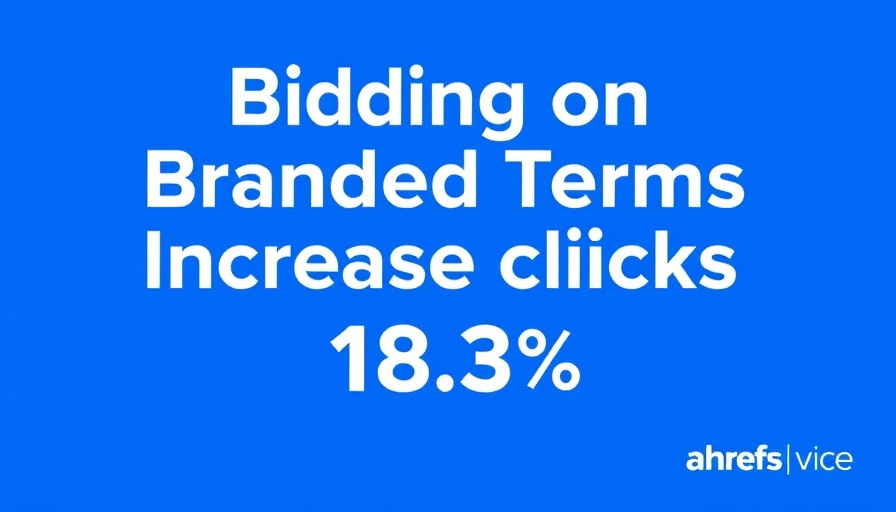
Why Bidding on Branded Terms Matters for Marketers
As online marketers, we often find ourselves wrestling with one burning question: should we bid on branded terms or let our organic traffic sing its praises? A recent study has turned the spotlight on this age-old debate, revealing that running paid ads on branded terms can result in a remarkable 18.3% spike in total clicks. The data suggests that while paid ads do nibble a bit at organic traffic, they ultimately unleash a flood of engagement. But hang onto your hats – there’s more to the story!
Unpacking the Data: What Do Numbers Really Mean?
Let’s dig into the juicy bits of the study, shall we? Conducted over three months, analyzing around 2.3 million keywords, the findings show that 46.7% of queries involved branded terms, and a substantial 59.5% of companies took the plunge and bid on their own brand keywords. In most cases, the brand stood alone as the only bidder (63.9%) – talk about owning your space! The key takeaway? Utilizing paid ads doesn’t just divert traffic; it expands it. Yes, you read that right! A solid 22.2% of the traffic shift headed towards paid ads, while organic traffic saw only a minimal decline of 3.9%.
Understanding the Nuance: Organic versus Paid
It’s a classic showdown between organic and paid. We often hear the war cry from SEO experts warning against the perils of paid traffic eating into our precious organic metrics. But lo and behold! The evidence suggests otherwise. While there’s some truth to the idea that paid advertising can cannibalize a fraction of organic traffic, the elevation in overall traffic cannot be overlooked. In layman’s terms, a well-strategized bid on branded terms can yield a net positive outcome, bringing more eyes to your brand while maintaining a healthy relationship with organic flow.
The Future of Traffic Acquisition: Predictions and Insights
Looking ahead, the implications for marketers are profound. As competition increases, brands must embrace a blend of SEO strategies and paid initiatives. Bidding on branded terms unlocks opportunities to reinforce brand authority and visibility in a crowded marketplace. It’s like having your cake and eating it too – you can dominate both the organic and paid spaces. Interested in a little speculation? We might see a future where companies regularly deploy dual campaigns to maximize their reach, blending both worlds for an integrated approach.
Actionable Insights: How to Maximize Your Campaign
If you’re considering a foray into the land of bidding on branded terms, here are a few starting points. First, meticulously track your data to gauge the quality of traffic generated via ads. Just because you’re getting clicks, it doesn’t mean they will convert! Analyze if those clicks stem from genuine potential customers or perhaps employees indulging in a little company pride. Secondly, run A/B tests to refine your targeting and ad copy – personalization is king in this game. And lastly, integrate these findings into your existing SEO strategies for a holistic approach.
Branded vs. Non-Branded: What’s the Real Difference?
Let’s hit home with a critical aspect: the stark contrast between branded and non-branded terms. This study affirms that bidding strategy provides little to no effect on organic traffic for non-branded terms, highlighting the significance of understanding consumer intent. By focusing on branded traffic, you originally defend your turf while scooping up additional potential that just would have floated by. It's a strategic play that can foster growth without the encompassing fear of spending too much on ads that lead nowhere.
Final Thoughts: Navigating the Digital Landscape
So, what’s the moral of the story? If you’re still on the fence about whether to embrace bidding on branded terms, remember that the specifics of your business will dictate the strategic value of this approach. Don’t just chase numbers; look for what translates into conversions and loyal customers. Experimentation is key, as every brand’s journey is unique. With the right data informing your strategies, understanding how to navigate the digital landscape can lead to promising outcomes.
 Add Row
Add Row  Add
Add 




Write A Comment